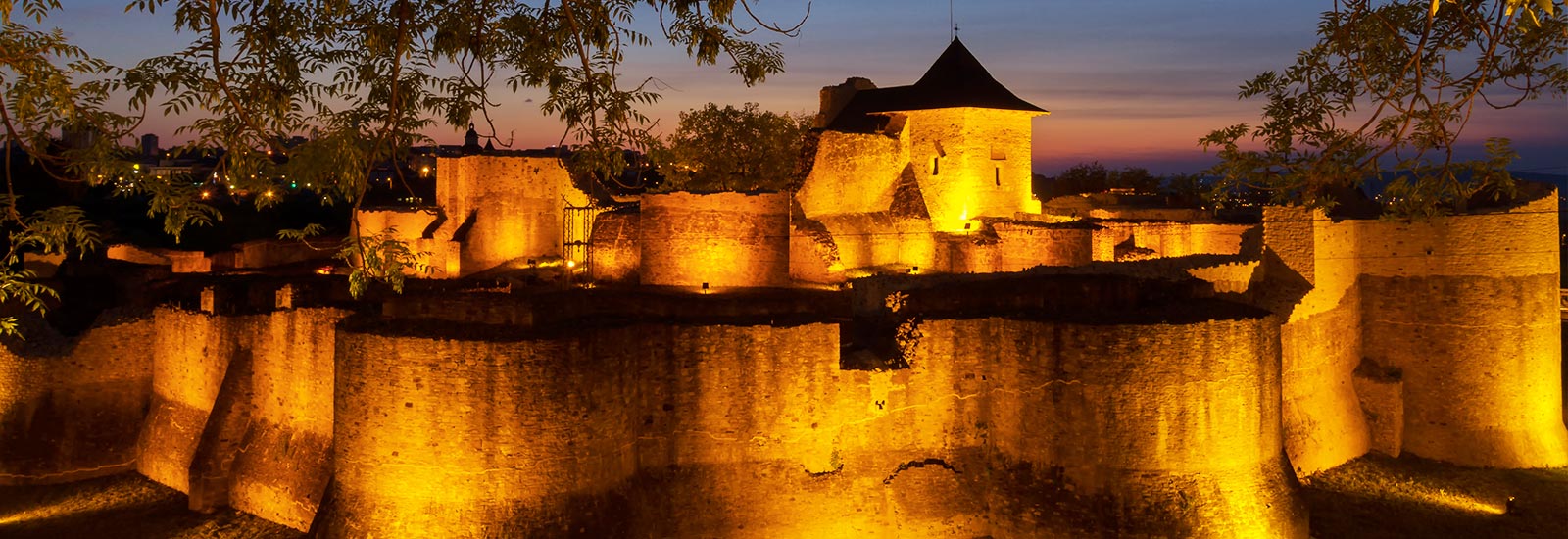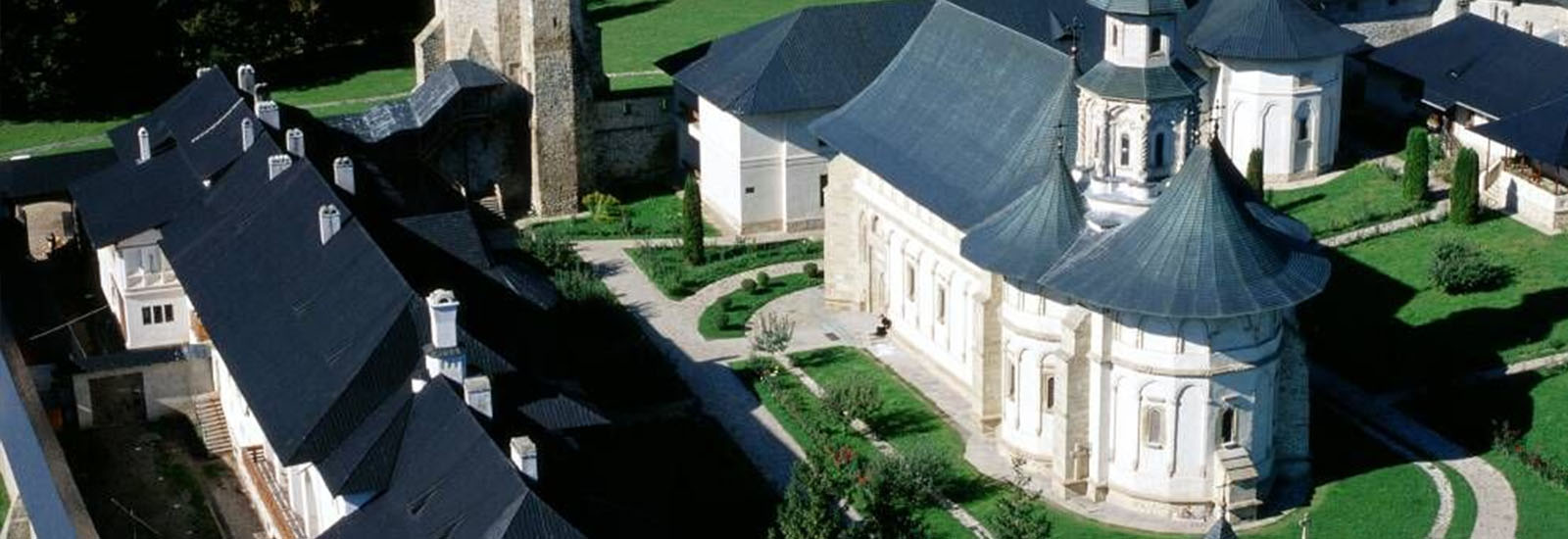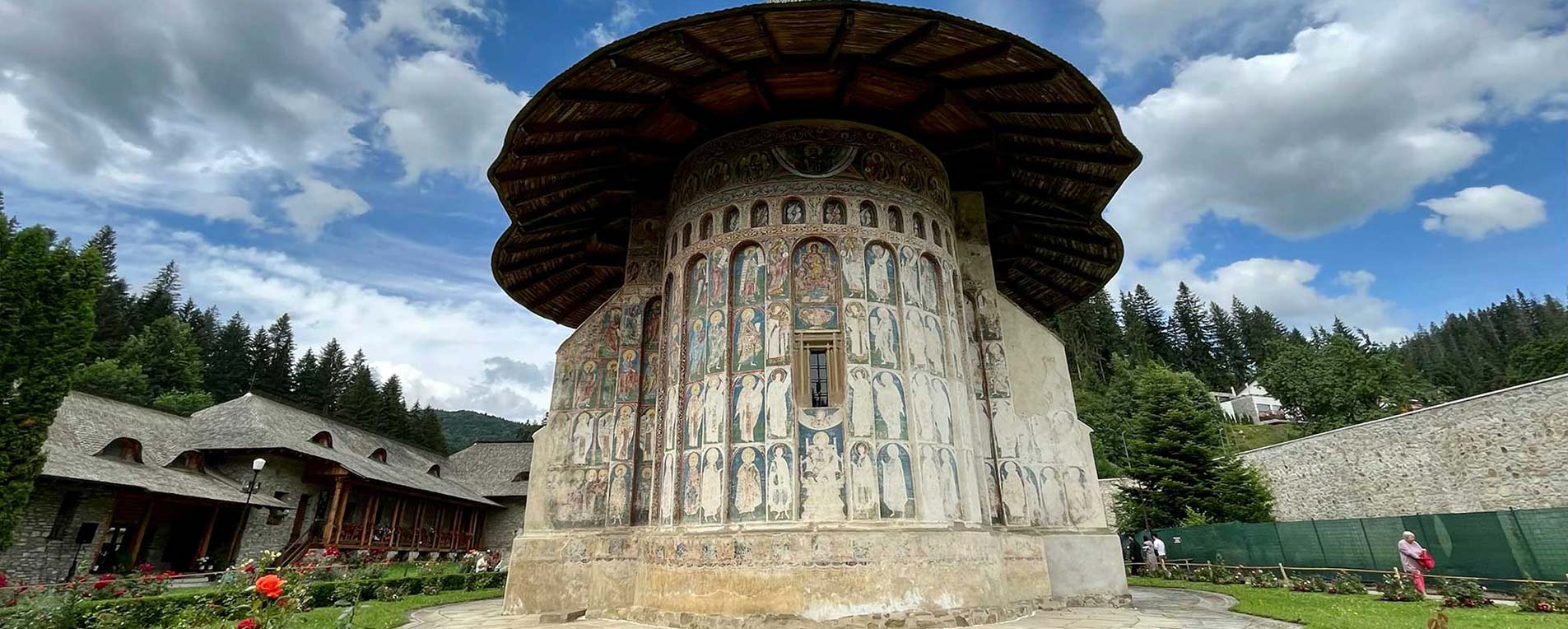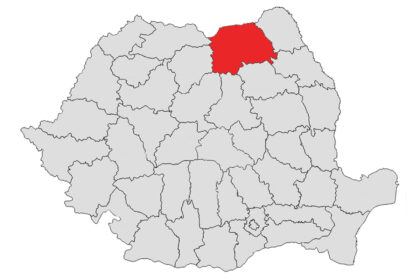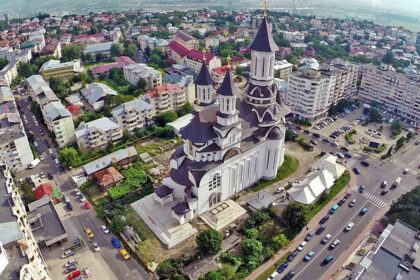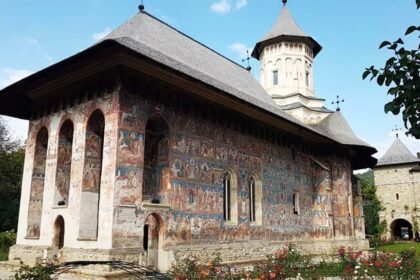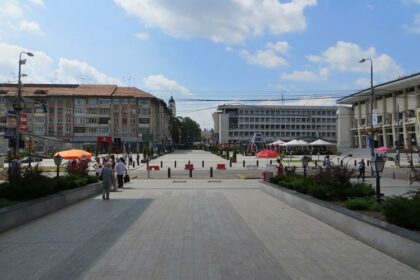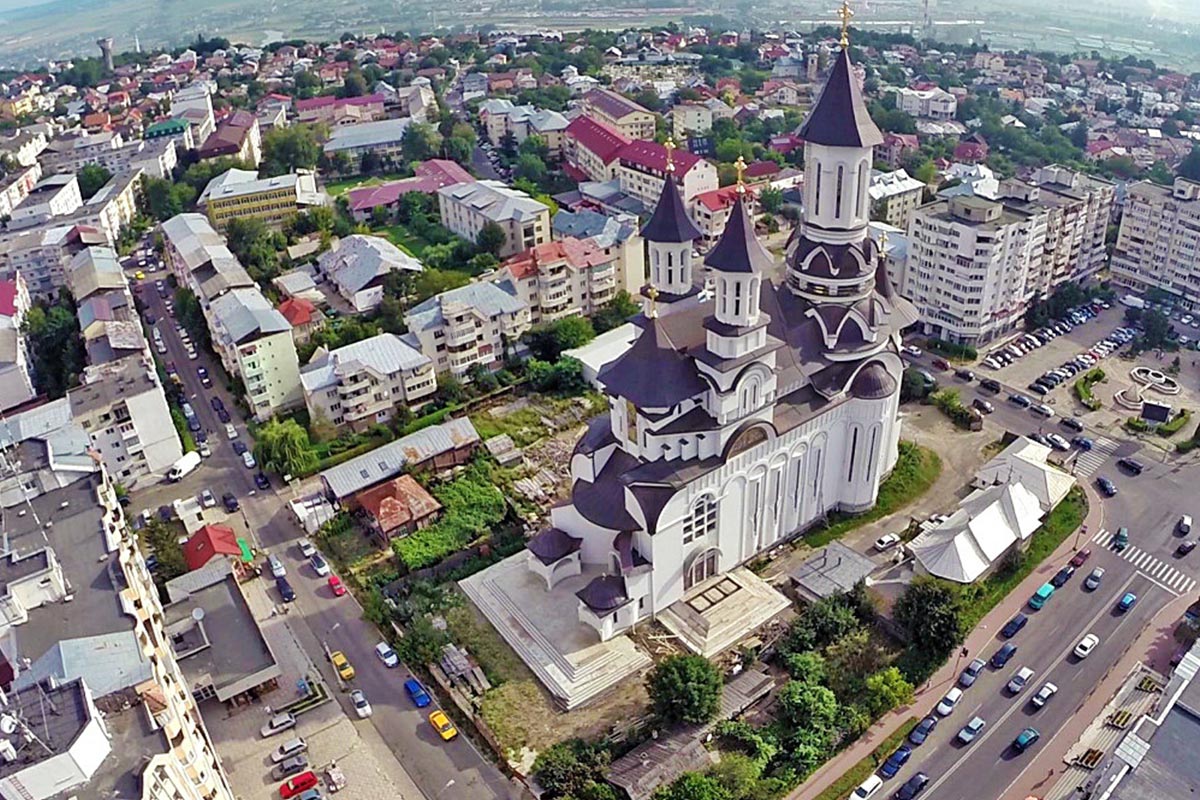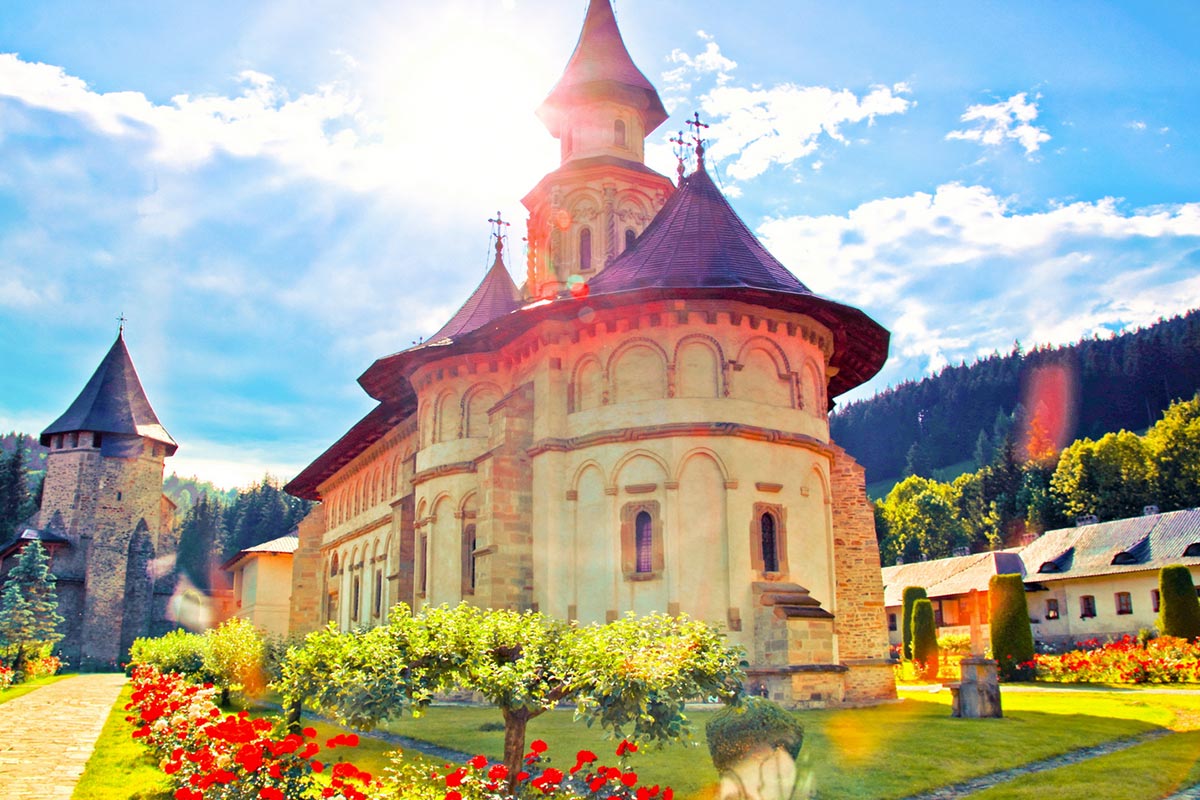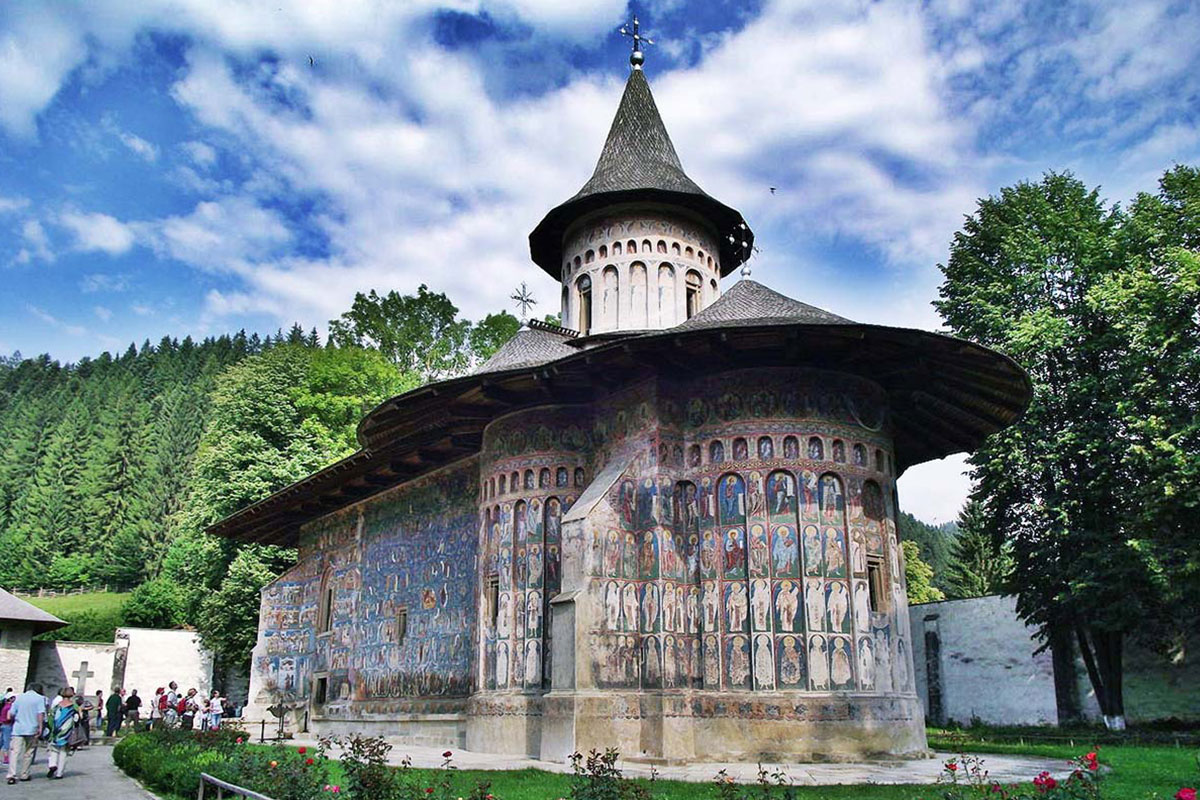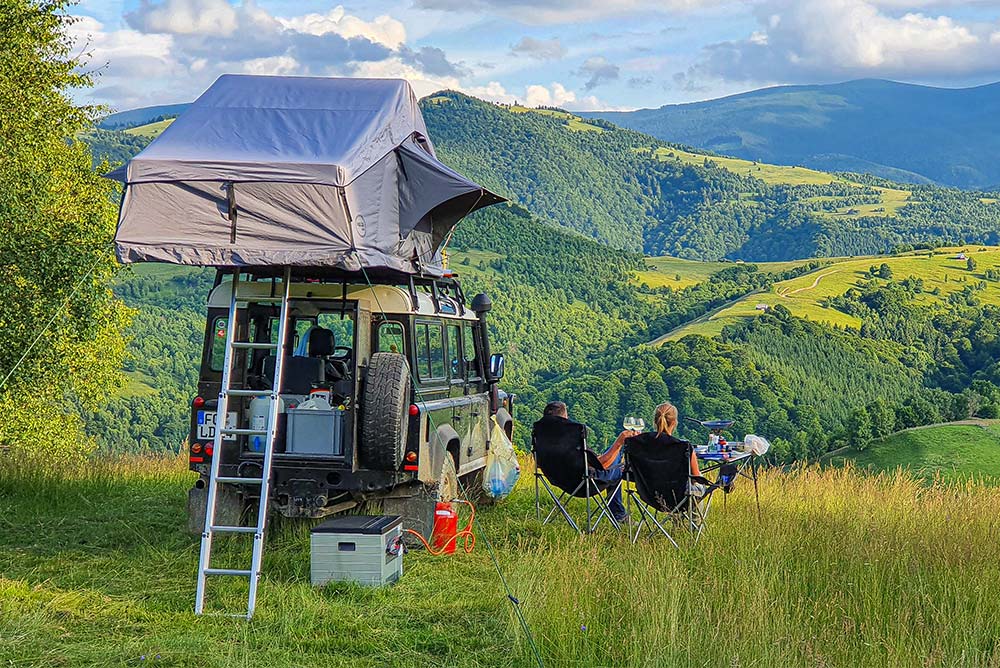Suceava County (Cities: Suceava, Falticeni, Radauti)
Suceava is a Romanian county in the Bucovina region with the capital of Suceava district. Its territory includes the southern part of the former Austrian crown land of Bukovina. The registration number and common abbreviation for the circle is SV. Suceava county borders Ukraine in the north, Botoșani and Iasi counties in the east, Neamț, Harghita and Mureș counties in the south and Bistrita-Năsăud and Maramureș counties in the west.
Facebook PostsView all Facebook posts!

Mocanita Hutulca Moldovita | Suceava County
(11 December 2025)
X

Mocanita Hutulca Moldovita | Suceava County
(11 December 2025)
The narrow-gauge steam railway Mocănița Huțulca Moldovița in Suceava County, in the northeast of Romania. The train also runs in winter, and the schedules and prices are available online.
We thank the photographer Sorin Onisor (facebook.com/sorinonisor) for granting permission to use these pictures.
We thank the photographer Sorin Onisor (facebook.com/sorinonisor) for granting permission to use these pictures.

Voronet Monastery | Suceava County
(03 December 2025)
X

Voronet Monastery | Suceava County
(03 December 2025)
Pictures from last weekend (November 30, 2025) of Voronet Monastery in Suceava County.
It is part of the so-called "Moldavian monasteries," which are located in the historical region of Bukovina in the northeast of Romania. The entrance fee for visitors is 10 lei (2 euros) for adults and 5 lei (1 euro) for children and students.
We thank the photographer for sending the pictures from his weekend trip. Thank you, Roland 😊
It is part of the so-called "Moldavian monasteries," which are located in the historical region of Bukovina in the northeast of Romania. The entrance fee for visitors is 10 lei (2 euros) for adults and 5 lei (1 euro) for children and students.
We thank the photographer for sending the pictures from his weekend trip. Thank you, Roland 😊

Monasteries of Moldovita, Sucevita, Putna, and Voronet
(02 December 2025)
X

Monasteries of Moldovita, Sucevita, Putna, and Voronet
(02 December 2025)
Pictures from last weekend (November 30, 2025) of the monasteries Moldovita, Sucevita, Putna, and Voronet in Suceava County.
The so-called "Moldavian monasteries" are located in the historical region of Bukovina in the northeast of Romania.
This includes the areas and monasteries of Putna, Sucevita, Vatra Moldovitei, Arbore, Monastirea Humorului, Cacica, Botosana, Cajvana, Patrauti, Mitocul Dragomirnei, Scheia, Ilisesti, Udesti, Baia, Rasca, Slatina, Vama, Sadova, Fundu Moldovei, Pojorata, Dorna Arini, Ciocanesti, Panaci, the towns of Gura Humorului, Dolhasca, as well as the communities of Suceava, Siret, Campulung Moldovenesc, Falticeni, Vatra Dornei.
We thank the photographer for sending the pictures from his weekend trip. Thank you, Roland 😊
The so-called "Moldavian monasteries" are located in the historical region of Bukovina in the northeast of Romania.
This includes the areas and monasteries of Putna, Sucevita, Vatra Moldovitei, Arbore, Monastirea Humorului, Cacica, Botosana, Cajvana, Patrauti, Mitocul Dragomirnei, Scheia, Ilisesti, Udesti, Baia, Rasca, Slatina, Vama, Sadova, Fundu Moldovei, Pojorata, Dorna Arini, Ciocanesti, Panaci, the towns of Gura Humorului, Dolhasca, as well as the communities of Suceava, Siret, Campulung Moldovenesc, Falticeni, Vatra Dornei.
We thank the photographer for sending the pictures from his weekend trip. Thank you, Roland 😊

A journey through Romania | Moldavian monasteries
(17 November 2025)

Cătălin Urdoi: "ACASĂ" / At Home | Bukovina (Bucovina)
(17 November 2025)
X

Cătălin Urdoi: "ACASĂ" / At Home | Bukovina (Bucovina)
(17 November 2025)
Beautiful pictures from previous years by the photographer Catalin Urdoi, from "home", from that place which, especially during the upcoming Christmas season, is the most important place for each of us 🎄🥰
We thank you for the permission to use these pictures (Cătălin Urdoi)
We thank you for the permission to use these pictures (Cătălin Urdoi)

Wonderful winter landscape | Suceava County
(16 November 2025)
X

Wonderful winter landscape | Suceava County
(16 November 2025)
The village of Paltinu (formerly Rusi pe Boul or Valea Boului, in German Russpeboul, Ochsenthal) is part of the commune Vatra Moldovitei in Suceava County, in the historical region of Bukovina, Romania.
We thank the photographer Sorin Onisor (https://www.facebook.com/sorinonisor) for granting permission to use this picture.
We thank the photographer Sorin Onisor (https://www.facebook.com/sorinonisor) for granting permission to use this picture.
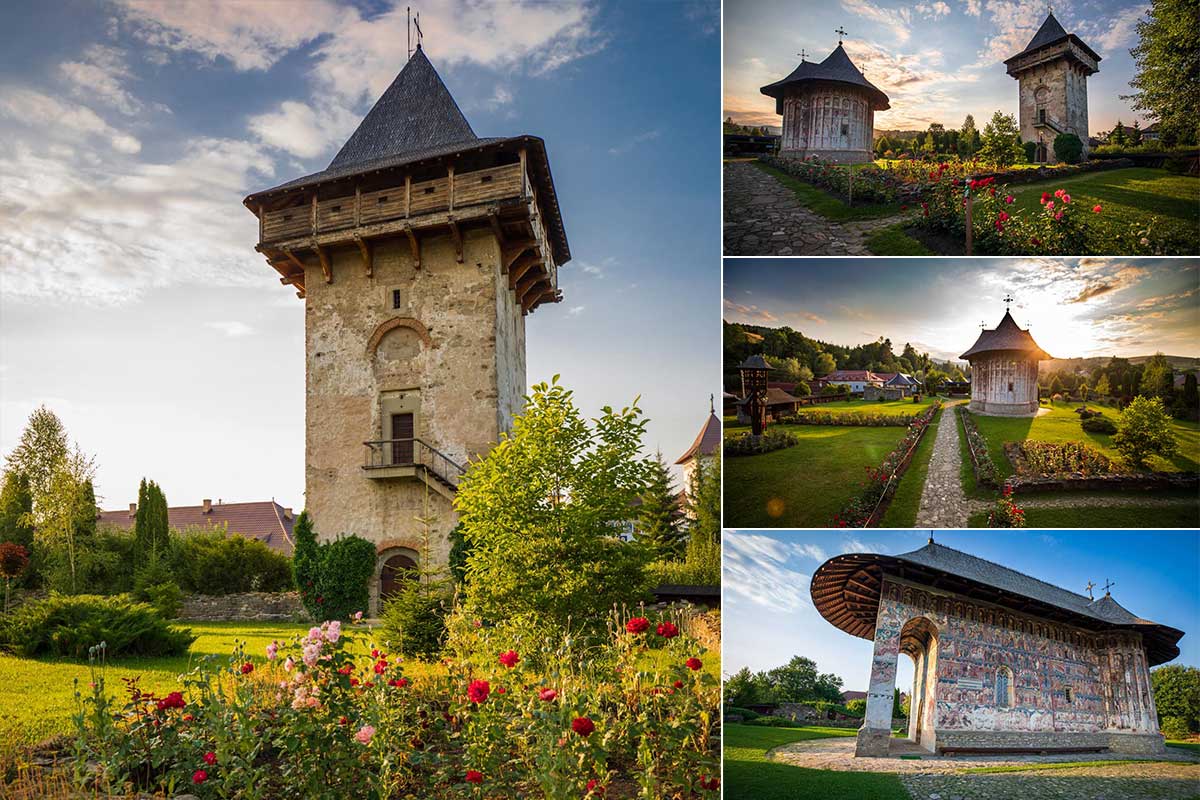
Humorului Monastery | Suceava county
(10 November 2025)
X

Humorului Monastery | Suceava county
(10 November 2025)
The Humor Monastery is a Romanian Orthodox women's monastery, located about 5 km north of the town of Gura Humorului, Suceava County (historical region of Bukovina / Bucovina).
We thank Mrs. Farkas Ildiko ( facebook.com/farkas.ildiko.75 ) for the permission to use these pictures.
We thank Mrs. Farkas Ildiko ( facebook.com/farkas.ildiko.75 ) for the permission to use these pictures.

Saint Mina Monastery | Suceava County
(10 November 2025)
X

Saint Mina Monastery | Suceava County
(10 November 2025)
Near the village of Rosiori (about 15 km south of the city of Suceava) lies the Monastery of Saint Mina. The "Saint Mina" Monastery of Rosiori is an old-style Orthodox monks' monastery, built in 1995.
Historical chronicles mention the existence of a hermitage dedicated to the Holy Archangels Michael and Gabriel in the 19th century. During excavations around the monastery, the remains of monks buried here were found. Also discovered was a brick from 1864 bearing the name of a monk, Porphyr, who was buried next to the church wall.
Between 1934 and 1937, there was already a monastery here. A monk from Neamț Monastery, Protosinghel Gamaliil, established a new monastic settlement on the site of the ruins of the former hermitage.
We thank Mr. Daniel Sippel for sending these impressive pictures.
Historical chronicles mention the existence of a hermitage dedicated to the Holy Archangels Michael and Gabriel in the 19th century. During excavations around the monastery, the remains of monks buried here were found. Also discovered was a brick from 1864 bearing the name of a monk, Porphyr, who was buried next to the church wall.
Between 1934 and 1937, there was already a monastery here. A monk from Neamț Monastery, Protosinghel Gamaliil, established a new monastic settlement on the site of the ruins of the former hermitage.
We thank Mr. Daniel Sippel for sending these impressive pictures.
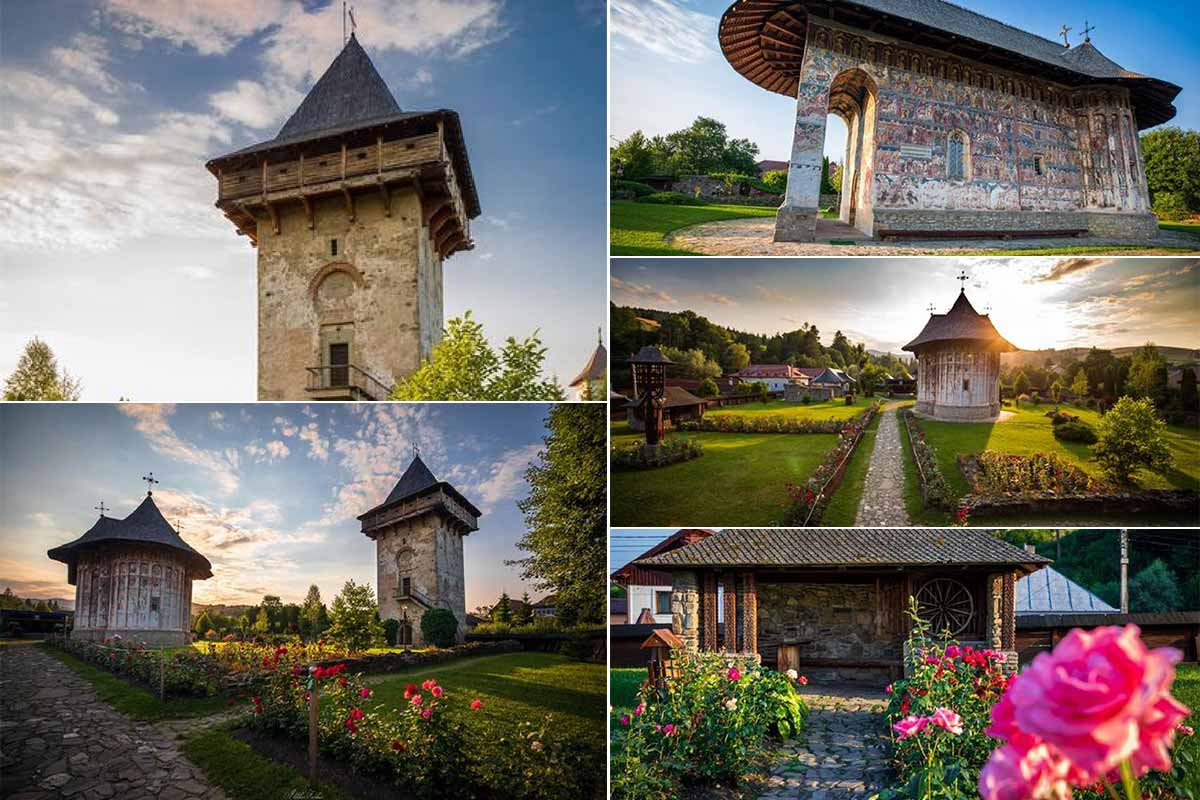
Humor Monastery
(05 October 2025)
X

Humor Monastery
(05 October 2025)
Humor Monastery is a Romanian Orthodox nunnery located about 5 km north of the town of Gura Humorului, Suceava County (historical region of Bukovina).
We thank Mrs. Farkas Ildiko ( facebook.com/farkas.ildiko.75 ) for the permission to use these images.
We thank Mrs. Farkas Ildiko ( facebook.com/farkas.ildiko.75 ) for the permission to use these images.

Mocanita / Moldovita | Many hearts beat faster
(05 October 2025)
X

Mocanita / Moldovita | Many hearts beat faster
(05 October 2025)
Mocănița is the name for a narrow‑gauge railway on which steam locomotives still operate. The best‑known "Mocănița" runs through the Vaser Valley in Maramureș County, north of the Transylvania region in Romania.
Moldovița is located in Suceava County in the northeast of Romania.
We thank the photographer Sorin Onisor ( facebook.com/sorinonisor) for granting permission to use these impressive pictures.
Moldovița is located in Suceava County in the northeast of Romania.
We thank the photographer Sorin Onisor ( facebook.com/sorinonisor) for granting permission to use these impressive pictures.

Bucovina | Moldavian Monasteries (Part 1 of 2)
(04 October 2025)
X

Bucovina | Moldavian Monasteries (Part 1 of 2)
(04 October 2025)
The monasteries of Bukovina (Bucovina) are located in Suceava County in the northeast of Romania.
They include the areas and monasteries of Putna, Sucevita, Vatra Moldoviței, Arbore, Monastirea Humorului, Cacica, Botoșana, Cajvana, Patrauți, Mitocul Dragomirnei, Scheia, Ilișesti, Udești, Baia, Rașca, Slatina, Vama, Sadova, Fundu Moldovei, Pojorata, Dorna Arini, Ciocanești, Panaci, the towns of Gura Humorului, Dolhasca, as well as the communities of Suceava, Siret, Campulung Moldovenesc, Falticeni, Vatra Dornei.
https://welcome-to-romania.com | https://urlaub-in-rumänien.de
We thank Tom & Helga for these beautiful pictures from their Romania tour in September and October 2024. Many thanks! 🥰
They include the areas and monasteries of Putna, Sucevita, Vatra Moldoviței, Arbore, Monastirea Humorului, Cacica, Botoșana, Cajvana, Patrauți, Mitocul Dragomirnei, Scheia, Ilișesti, Udești, Baia, Rașca, Slatina, Vama, Sadova, Fundu Moldovei, Pojorata, Dorna Arini, Ciocanești, Panaci, the towns of Gura Humorului, Dolhasca, as well as the communities of Suceava, Siret, Campulung Moldovenesc, Falticeni, Vatra Dornei.
https://welcome-to-romania.com | https://urlaub-in-rumänien.de
We thank Tom & Helga for these beautiful pictures from their Romania tour in September and October 2024. Many thanks! 🥰

Bucovina | Moldavian Monasteries (Part 2 of 2)
(04 October 2025)
X

Bucovina | Moldavian Monasteries (Part 2 of 2)
(04 October 2025)
The monasteries of Bukovina (Bucovina) are located in Suceava County in the northeast of Romania.
They include the areas and monasteries of Putna, Sucevita, Vatra Moldoviței, Arbore, Monastirea Humorului, Cacica, Botoșana, Cajvana, Patrauți, Mitocul Dragomirnei, Scheia, Ilișesti, Udești, Baia, Rașca, Slatina, Vama, Sadova, Fundu Moldovei, Pojorata, Dorna Arini, Ciocanești, Panaci, the towns of Gura Humorului, Dolhasca, as well as the communities of Suceava, Siret, Campulung Moldovenesc, Falticeni, Vatra Dornei.
https://welcome-to-romania.com | https://urlaub-in-rumänien.de
We thank Tom & Helga for these beautiful pictures from their Romania tour in September and October 2024. Many thanks! 🥰
They include the areas and monasteries of Putna, Sucevita, Vatra Moldoviței, Arbore, Monastirea Humorului, Cacica, Botoșana, Cajvana, Patrauți, Mitocul Dragomirnei, Scheia, Ilișesti, Udești, Baia, Rașca, Slatina, Vama, Sadova, Fundu Moldovei, Pojorata, Dorna Arini, Ciocanești, Panaci, the towns of Gura Humorului, Dolhasca, as well as the communities of Suceava, Siret, Campulung Moldovenesc, Falticeni, Vatra Dornei.
https://welcome-to-romania.com | https://urlaub-in-rumänien.de
We thank Tom & Helga for these beautiful pictures from their Romania tour in September and October 2024. Many thanks! 🥰

Putna Monastery | Suceava County
(03 October 2025)
X

Putna Monastery | Suceava County
(03 October 2025)
Putna Monastery is located about 70 kilometers from the city of Suceava and is part of the so-called Moldavian monasteries, a group of Romanian Orthodox monasteries in southern Bukovina.
According to a legend told by the historian Ion Neculce, before founding the monastery, Stephen the Great shot an arrow from a mountain into the nearby Carpathian valley. The prince decided to build an altar at the spot where his arrow landed. Afterwards, Prince Stephen had the monastery built between 1466 and 1469.
The monastery was consecrated on September 3, 1470. At that time, Putna Monastery was a flourishing cultural center. Between the 15th and 16th centuries, clergy and chroniclers from the region were trained there.
We thank Mrs. Monika Opreapopa for sending and allowing us to use these pictures.
According to a legend told by the historian Ion Neculce, before founding the monastery, Stephen the Great shot an arrow from a mountain into the nearby Carpathian valley. The prince decided to build an altar at the spot where his arrow landed. Afterwards, Prince Stephen had the monastery built between 1466 and 1469.
The monastery was consecrated on September 3, 1470. At that time, Putna Monastery was a flourishing cultural center. Between the 15th and 16th centuries, clergy and chroniclers from the region were trained there.
We thank Mrs. Monika Opreapopa for sending and allowing us to use these pictures.

Putna Monastery | Suceava County
(26 August 2025)
X

Putna Monastery | Suceava County
(26 August 2025)
Putna Monastery is located about 70 kilometers from the city of Suceava and is part of the so-called Moldavian monasteries, a group of Romanian Orthodox monasteries in southern Bukovina.
According to a legend told by the historian Ion Neculce, before founding the monastery, Stephen the Great shot an arrow from a mountain into the nearby Carpathian valley. The prince decided to build an altar at the spot where his arrow landed. Afterwards, Prince Stephen had the monastery built between 1466 and 1469.
The monastery was consecrated on September 3, 1470. At that time, Putna Monastery was a flourishing cultural center. Between the 15th and 16th centuries, clergy and chroniclers from the region were trained there.
We thank Mrs. Monika Opreapopa for sending and allowing us to use these pictures.
According to a legend told by the historian Ion Neculce, before founding the monastery, Stephen the Great shot an arrow from a mountain into the nearby Carpathian valley. The prince decided to build an altar at the spot where his arrow landed. Afterwards, Prince Stephen had the monastery built between 1466 and 1469.
The monastery was consecrated on September 3, 1470. At that time, Putna Monastery was a flourishing cultural center. Between the 15th and 16th centuries, clergy and chroniclers from the region were trained there.
We thank Mrs. Monika Opreapopa for sending and allowing us to use these pictures.
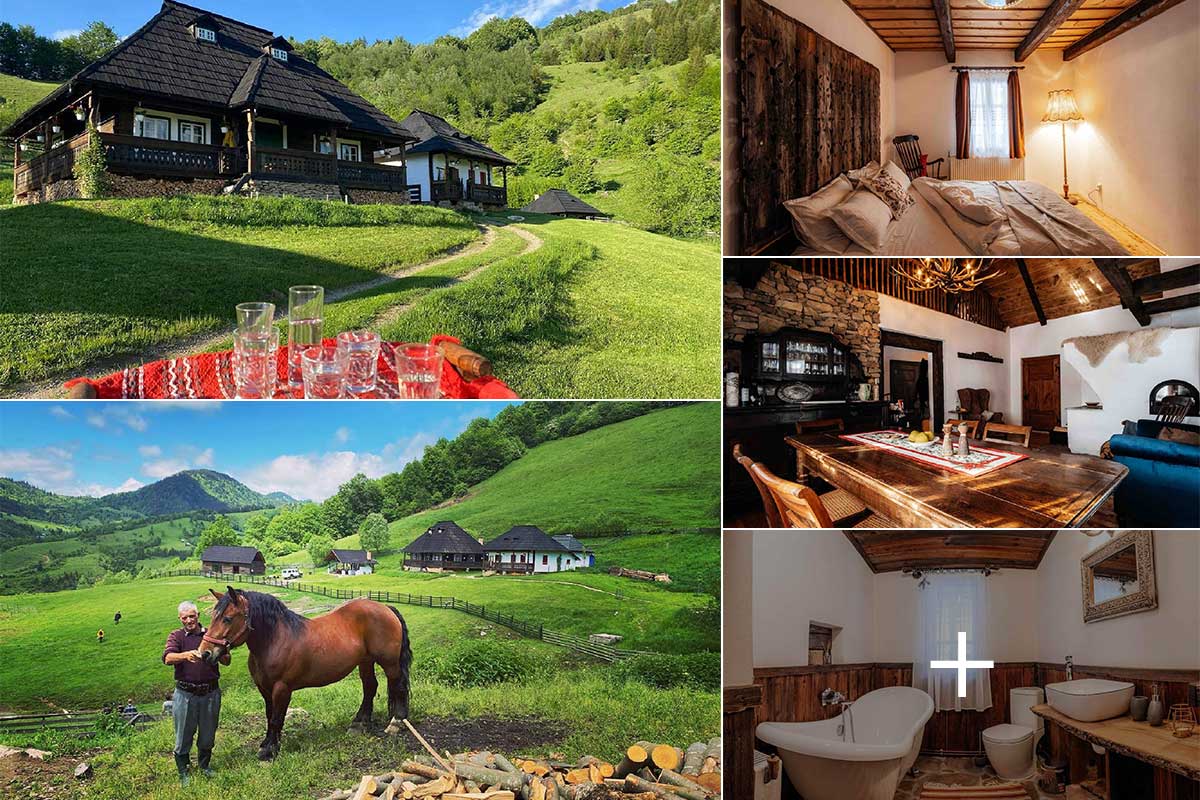
One with nature ... Hai La Saivan | Suceava County
(10 August 2025)
X

One with nature ... Hai La Saivan | Suceava County
(10 August 2025)
Experience a vacation or just a few days in a still untouched natural world of Bukovina in your own hut / small house.
Enjoy sunrises, breakfast coffee and pure nature. And despite everything, you won't miss out on modern comforts such as electricity, heating, hot water and modern toilets ... that's what you'll find here. The only thing you won't find is a TV, but who needs that with this wonderful panorama right outside the door.
Hai La Saivan, three renovated, rustic houses await you (Casa Mare, Casa Mica, Casa Foarte Mica). Ideal for small groups (4-8 people, Casa Mare) to singles or couples (Casa Foarte Mica, 2 people).
Find out much more and all contact details:
https://deutschsprachiges-gastgewerbe-rumänien.de/hai-la-saivan-de/
Enjoy sunrises, breakfast coffee and pure nature. And despite everything, you won't miss out on modern comforts such as electricity, heating, hot water and modern toilets ... that's what you'll find here. The only thing you won't find is a TV, but who needs that with this wonderful panorama right outside the door.
Hai La Saivan, three renovated, rustic houses await you (Casa Mare, Casa Mica, Casa Foarte Mica). Ideal for small groups (4-8 people, Casa Mare) to singles or couples (Casa Foarte Mica, 2 people).
Find out much more and all contact details:
https://deutschsprachiges-gastgewerbe-rumänien.de/hai-la-saivan-de/

Moldovita Monastery | Suceava County
(04 August 2025)
X

Moldovita Monastery | Suceava County
(04 August 2025)
Moldovita Monastery is a Romanian Orthodox monastery located in the commune of Vatra Moldovitei, Suceava County. The monastery was built in 1532 by Petru Rares, the illegitimate son of Stephen III of Moldavia.
It is one of the eight monasteries in Northern Moldavia with frescoes on the exterior walls. Sister Maika, who has lived in the monastery for more than 50 years, says it is “the Holy Scripture in color.” The frescoes of Moldovita were painted by Toma of Suceava in 1537. They are filled with yellow accents and are well preserved. The predominantly yellow-blue paintings on the outside depict recurring themes in Christian Orthodox art.
We thank Mrs. Monika Opreapopa for sending and allowing us to use these pictures.
It is one of the eight monasteries in Northern Moldavia with frescoes on the exterior walls. Sister Maika, who has lived in the monastery for more than 50 years, says it is “the Holy Scripture in color.” The frescoes of Moldovita were painted by Toma of Suceava in 1537. They are filled with yellow accents and are well preserved. The predominantly yellow-blue paintings on the outside depict recurring themes in Christian Orthodox art.
We thank Mrs. Monika Opreapopa for sending and allowing us to use these pictures.

Putna Monastery | Suceava County
(04 August 2025)
X

Putna Monastery | Suceava County
(04 August 2025)
Putna Monastery is located about 70 kilometers from the city of Suceava and is part of the so-called Moldavian monasteries, a group of Romanian Orthodox monasteries in southern Bukovina.
According to a legend told by the historian Ion Neculce, before founding the monastery, Stephen the Great shot an arrow from a mountain into the nearby Carpathian valley. The prince decided to build an altar at the spot where his arrow landed. Afterwards, Prince Stephen had the monastery built between 1466 and 1469.
The monastery was consecrated on September 3, 1470. At that time, Putna Monastery was a flourishing cultural center. Between the 15th and 16th centuries, clergy and chroniclers from the region were trained there.
We thank Mrs. Monika Opreapopa for sending and allowing us to use these pictures.
According to a legend told by the historian Ion Neculce, before founding the monastery, Stephen the Great shot an arrow from a mountain into the nearby Carpathian valley. The prince decided to build an altar at the spot where his arrow landed. Afterwards, Prince Stephen had the monastery built between 1466 and 1469.
The monastery was consecrated on September 3, 1470. At that time, Putna Monastery was a flourishing cultural center. Between the 15th and 16th centuries, clergy and chroniclers from the region were trained there.
We thank Mrs. Monika Opreapopa for sending and allowing us to use these pictures.

Monasteries in Bukovina (Bucovina) | Suceava County
(26 July 2025)
X

Monasteries in Bukovina (Bucovina) | Suceava County
(26 July 2025)
The UNESCO World Heritage-listed monasteries of Bukovina (Bucovina), known as the Moldavian Monasteries, are located in Suceava County in northeastern Romania.
https://welcome-to-romania.com | https://urlaub-in-rumänien.de
They include the areas and monasteries of Putna, Sucevita, Vatra Moldoviței, Arbore, Monastirea Humorului, Cacica, Botoșana, Cajvana, Patrauți, Mitocul Dragomirnei, Scheia, Ilișesti, Udești, Baia, Rașca, Slatina, Vama, Sadova, Fundu Moldovei, Pojorata, Dorna Arini, Ciocanești, Panaci, as well as the towns of Gura Humorului, Dolhasca, and the municipalities of Suceava, Siret, Câmpulung Moldovenesc, Fălticeni, and Vatra Dornei.
Images / Text: https://destinatiaanului.ro/
https://welcome-to-romania.com | https://urlaub-in-rumänien.de
They include the areas and monasteries of Putna, Sucevita, Vatra Moldoviței, Arbore, Monastirea Humorului, Cacica, Botoșana, Cajvana, Patrauți, Mitocul Dragomirnei, Scheia, Ilișesti, Udești, Baia, Rașca, Slatina, Vama, Sadova, Fundu Moldovei, Pojorata, Dorna Arini, Ciocanești, Panaci, as well as the towns of Gura Humorului, Dolhasca, and the municipalities of Suceava, Siret, Câmpulung Moldovenesc, Fălticeni, and Vatra Dornei.
Images / Text: https://destinatiaanului.ro/
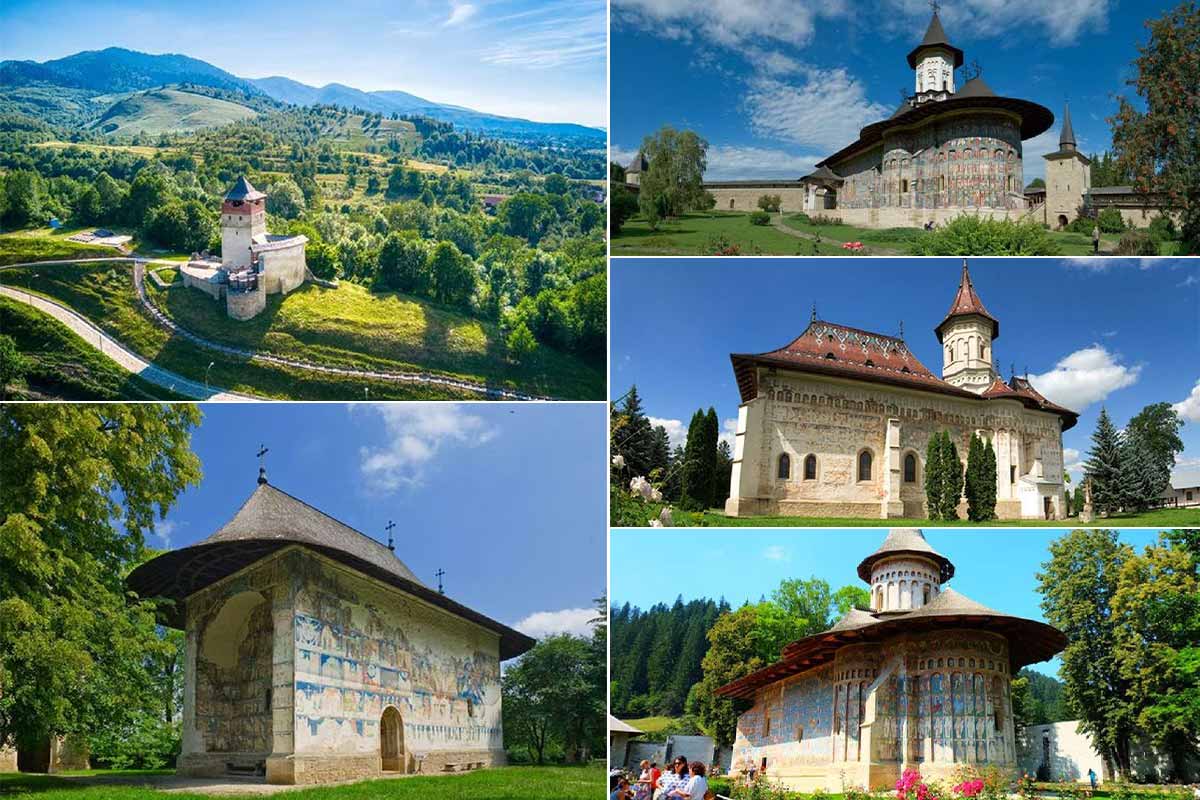
Monasteries in Bukovina (Bucovina) | Moldavian monasteries
(22 June 2025)
X

Monasteries in Bukovina (Bucovina) | Moldavian monasteries
(22 June 2025)
The monasteries of Bukovina (Bucovina) are located in Suceava County, in the northeast of Romania.
They include the areas and monasteries of Putna, Sucevita, Vatra Moldoviței, Arbore, Monastirea Humorului, Cacica, Botoșana, Cajvana, Patrauti, Mitocul Dragomirnei, Scheia, Ilișesti, Udești, Baia, Rașca, Slatina, Vama, Sadova, Fundu Moldovei, Pojorata, Dorna Arini, Ciocanești, Panaci, the towns of Gura Humorului, Dolhasca, as well as the municipalities of Suceava, Siret, Campulung Moldovenesc, Falticeni, Vatra Dornei.
Pictures / Text: https://destinatiaanului.ro
They include the areas and monasteries of Putna, Sucevita, Vatra Moldoviței, Arbore, Monastirea Humorului, Cacica, Botoșana, Cajvana, Patrauti, Mitocul Dragomirnei, Scheia, Ilișesti, Udești, Baia, Rașca, Slatina, Vama, Sadova, Fundu Moldovei, Pojorata, Dorna Arini, Ciocanești, Panaci, the towns of Gura Humorului, Dolhasca, as well as the municipalities of Suceava, Siret, Campulung Moldovenesc, Falticeni, Vatra Dornei.
Pictures / Text: https://destinatiaanului.ro
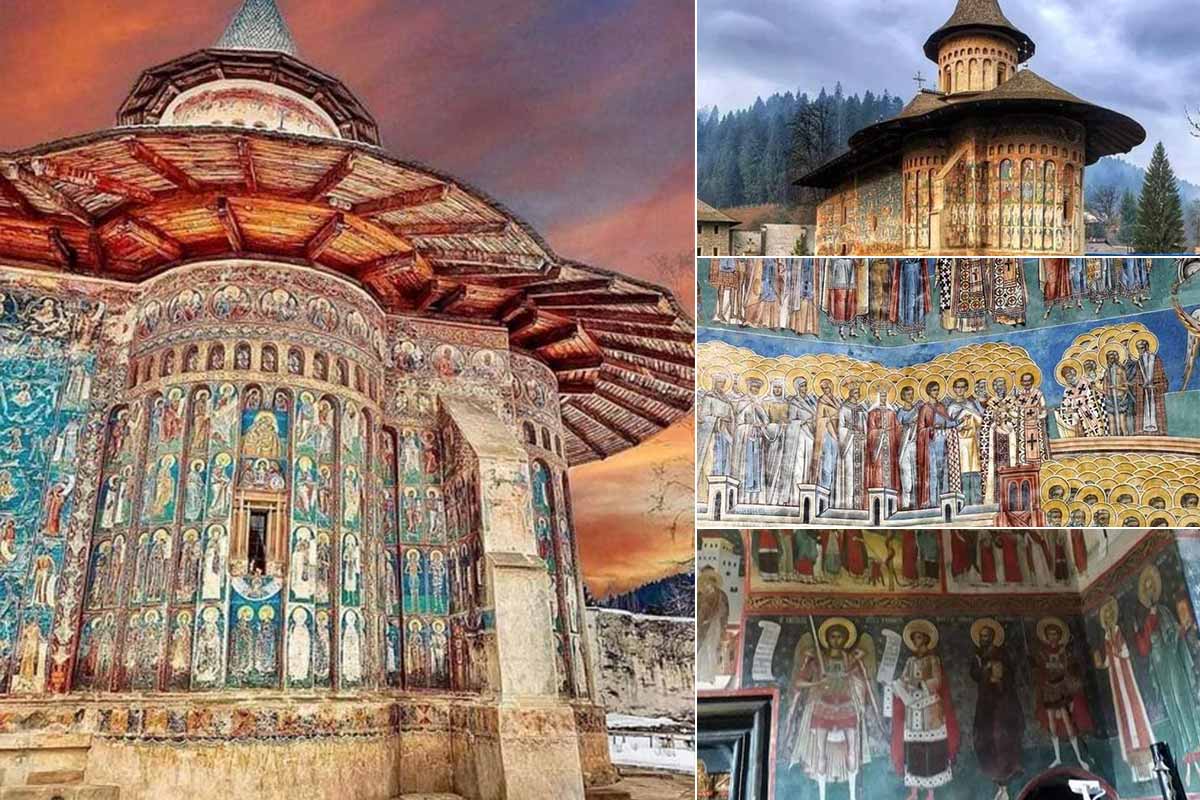
Voronet Monastery | Suceava County
(17 May 2025)
X

Voronet Monastery | Suceava County
(17 May 2025)
Voroneț Monastery is located in the municipality of Gura Humorului in Suceava County in the historical region of Bucovina (Bucovina) in Romania.
It was built in 1488 by Stephen the Great in a period of just under four (4) months to commemorate the victory at the Battle of Vaslui.
Find out more about Romania, landscapes, sights and cities: https://xn--urlaub-in-rumnien-2qb.de/
We thank Vlad the Impaler - Dracula for the permission to use these marvellous pictures.
It was built in 1488 by Stephen the Great in a period of just under four (4) months to commemorate the victory at the Battle of Vaslui.
Find out more about Romania, landscapes, sights and cities: https://xn--urlaub-in-rumnien-2qb.de/
We thank Vlad the Impaler - Dracula for the permission to use these marvellous pictures.

Romania | What you definitely should see
(19 April 2025)
X

Romania | What you definitely should see
(19 April 2025)
A small selection of cities, places, and destinations that you should definitely visit at least once on a trip through Romania (Part 6 of 500 🥰).
Here: Moldavian Monasteries in Suceava County
https://welcome-to-romania.com | https://willkommen-in-rumänien.de
Arbore Monastery: Church of the Beheading of Saint John the Baptist of the former monastery | Humor Monastery: Church of the Dormition of the Mother of God and Saint George of the monastery | Moldovița Monastery: Church of the Annunciation of the monastery | Pătrăuți Monastery: Church of the Exaltation of the Holy Cross | Probota Monastery: Church of Saint Nicholas of the monastery | Suceava Monastery: Church of Saint George of the Saint John the New Monastery | Sucevița Monastery: Church of the Resurrection of the Lord of Sucevița Monastery (World Heritage since 2010) | Voroneț Monastery: Church of Saint George of Voroneț Monastery
We thank Mrs. Farkas Ildiko (facebook.com/farkas.ildiko.75) for the permission to use these pictures.
Here: Moldavian Monasteries in Suceava County
https://welcome-to-romania.com | https://willkommen-in-rumänien.de
Arbore Monastery: Church of the Beheading of Saint John the Baptist of the former monastery | Humor Monastery: Church of the Dormition of the Mother of God and Saint George of the monastery | Moldovița Monastery: Church of the Annunciation of the monastery | Pătrăuți Monastery: Church of the Exaltation of the Holy Cross | Probota Monastery: Church of Saint Nicholas of the monastery | Suceava Monastery: Church of Saint George of the Saint John the New Monastery | Sucevița Monastery: Church of the Resurrection of the Lord of Sucevița Monastery (World Heritage since 2010) | Voroneț Monastery: Church of Saint George of Voroneț Monastery
We thank Mrs. Farkas Ildiko (facebook.com/farkas.ildiko.75) for the permission to use these pictures.

Mocănița Huțulca Moldovița | Suceava County
(08 April 2025)
X

Mocănița Huțulca Moldovița | Suceava County
(08 April 2025)
Mocănița Huțulca Moldovița from Suceava County in northeastern Romania. The train also runs in winter (December 21 and January / February 2022) and driving times and prices are visible on the Facebook page.
We thank the photographer Sorin Onisor ( facebook.com/sorinonisor ) for the permission to use these pictures.
We thank the photographer Sorin Onisor ( facebook.com/sorinonisor ) for the permission to use these pictures.

Romania's Monastery Frescoes in Sucevița | Suceava County
(28 February 2025)
X

Romania's Monastery Frescoes in Sucevița | Suceava County
(28 February 2025)

Mănăstirea Acoperământul Maicii Domnului
(06 January 2025)
X

The Shrine of the Mother of God Monastery
(06 January 2025)
A photographic journey through the Monastery of the Protection of the Mother of God in the commune of Dorna-Arini, Bukovina region, Suceava County.
We thank Ms. Farkas Ildikó (facebook.com/farkas.ildiko.75) for the permission to use these wonderful images.
We thank Ms. Farkas Ildikó (facebook.com/farkas.ildiko.75) for the permission to use these wonderful images.

Putna in winter | Suceava County
(03 January 2025)
X

Putna in winter | Suceava County
(03 January 2025)
The Putna Monastery is located about 70 kilometers from the city of Suceava, in the county of the same name, Suceava. Today, it is part of a group of Romanian Orthodox monasteries – the Moldavian monasteries – in southern Bukovina.
We thank Vlad the Impaler - Dracula for the permission to use this image.
We thank Vlad the Impaler - Dracula for the permission to use this image.

